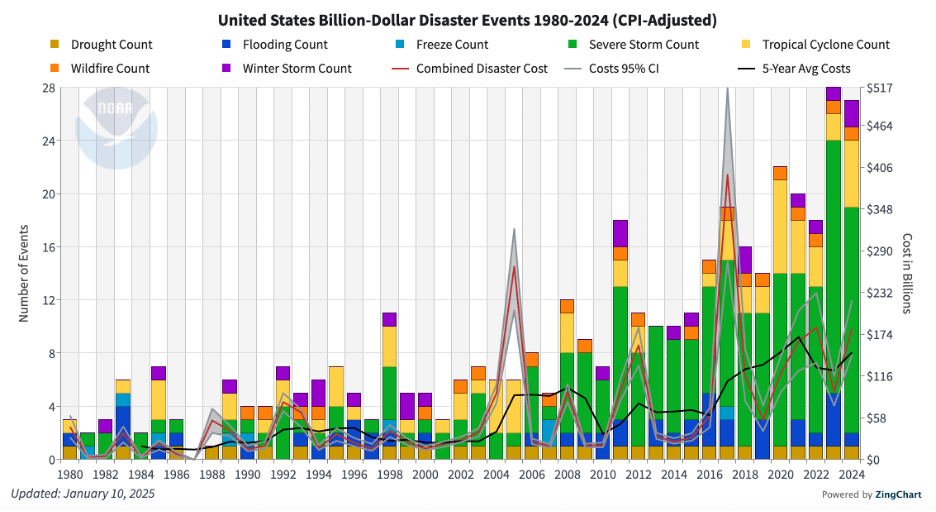Building Moats in the AI Era - Part 2: The 7 Powers in an AI World
By
Virta Ventures
ON
November 14, 2025

Even in the AI era, Hamilton Helmer’s 7 Powers framework remains one of the clearest ways to understand competitive advantage.
Speed alone isn’t enough, though we do believe that sustained speed in the right direction is a quintessential form of the ever-elusive Process Power:
“Embedded company organization and activity sets which enable lower costs and/or superior product, and can be matched on by an extended commitment.”
Enduring advantage comes when powers work together, leveraging unique data (Cornered Resources), embedding deeply into workflows (Switching Costs), or amplifying Network Economies. When rapidly and thoughtfully stacked, these powers reinforce each other, creating compounding moats that remain resilient as technology and markets rapidly shift.
Below, we explore how each of the 7 Powers is evolving in the AI era, with some strengthening, some weakening, and some maintaining the status quo. We’ve ordered the Powers based on our view on their strength in the AI era.
Cornered Resources: Data, Hardware, and Talent
Cornered Resources remain among the most powerful moats, but AI has shifted which resources matter most. Proprietary code and generic datasets are less defensible, while rights-cleared, continuously refreshed data, hardware IP (which can contribute to data collection), and scarce talent are critical.
Rights cleared, continuously refreshed data: Shovels combines AI with human-in-the-loop data collection to create a proprietary nationwide real-time permitting dataset that foundational models cannot replicate - as a16z put it, these are the ‘fruits of the walled garden’.
Hardware IP: In the context of AI, hardware IP that enables novel data collection can be a powerful moat. LAIIER’s proprietary tape collects mountains of data around leaks and potential leaks in high-value assets.
Scarce talent: If you follow financial news, it’s clear that talent has become an increasingly scarce and valuable resource, highlighted by multi-billion-dollar “acquisitions” of a single person or the entire senior team from leading AI companies. AI massively amplifies the impact of talented individuals and small teams.
Network Economies: From Linear to Exponential
Network Economies, better known as network effects, occur when each new user makes a product or system more valuable for everyone else (classic examples include Instagram and Airbnb). They’re most visible in software and marketplace platforms but can also emerge in hardware businesses.
On the software/marketplace side, Mercor serves as a quintessential case. By connecting former employees from white collar services to AI Labs that want to automate in those industries, they generate increasing value for each side of the market as more former employees and AI Labs join.
On the hardware side, Tesla’s Autopilot is the clearest example. Every car on the road gathers real-world data that refines the model for the entire fleet, making each vehicle smarter over time. Generic AI copilots without proprietary data cannot replicate this advantage. More users alone do not make the product better.
AI can accelerate the development of network effects. Plug, the leading wholesale auction built for EVs, demonstrates classic network effects that are amplified by AI - accelerating onboarding of dealers, fleets, and the vehicles themselves; agents embedded into the platform make it seamless for users to interact with each other and the platform data.
Kaya, an AI-powered construction supply chain solution, also demonstrates powerful network effects turbocharged by AI. When they onboard a customer (general contractor), suppliers, and subcontractors are also onboarded in order to unlock the true value of Kaya’s platform. AI allows this to happen in days, rather than the many weeks or months it once required. Once on the platform, all these stakeholders seamlessly interact with one another and with real-time, accurate data to speed up workflows and save time and money.
Counter-Positioning: Incumbent Dilemmas
Counter-Positioning occurs when incumbents cannot adopt a new business model without harming their existing revenue. AI-native pricing models, such as outcomes-based or usage-based contracts, are difficult for legacy businesses to replicate. Timing matters because incumbents with AI capabilities and distribution can pivot very quickly, compressing the opportunity window.
In services, Everstar is replacing and augmenting traditional consulting - AI-accelerated nuclear licensing, compliance, and supply chain development. They can deliver better, faster, and cheaper services than incumbents, who will struggle to lower prices or dramatically change their business model without cannibalizing existing business. We are seeing a similar story in legal tech, where Eudia is playing the classic counter-positioning hand—rather than just selling tools to law firms, they are becoming a law firm. No more opaque, high cost, hourly billing—just transparent, cheap, fixed-price engagements.
In real estate, Resilience Investments is counter-positioning from multiple angles. They’ve built a proprietary data stack to underwrite residential homes for long-term resilience. Instead of joining the crowded field of data companies selling into real estate and insurance, they are building an AI-enabled real-assets manager focused entirely on resilience. Incumbent asset managers can’t afford to market resilience, because doing so would highlight their overexposure to non-resilient assets and geographies. In addition, most established firms will be slow to adopt and effectively integrate AI—turning ships that large is hard.
Beware the rare, nimble incumbent that breaks through the innovator’s dilemma. If they effectively adopt AI, their established brand, distribution, data, customer relationships, and more can quickly squash any upstarts that underestimate them. Unlike cornered resources or network effects, counter-positioning may be time-bound to when (if?) incumbents adapt to the AI age.
Process Power: Speed as Organizational Capability
“Process Power” is an organizational capability that competitors cannot replicate, even when copying systems. The prime example is the Toyota Production System - a combination of people, processes, technology, and culture that eliminates waste and inefficiency, leading to higher quality, lower costs, and greater customer satisfaction.
In AI, this manifests as sustained speed: moving quickly, collectively, and consistently in the right direction - which most clearly shows up in explosive revenue growth and high retention. Henry Shi’s Lean AI Leaderboard highlights many of the leading companies that embody modern-day Process Power. Can they sustain their positions, as dozens of copycats try to take them down?
Creating this Process Power requires the founding team to move fast themselves, create a culture around speed, and consistently hire top talent to retain and enhance that culture (cornered resources rear their heads yet again!). In order to sustain speed and retain talent, startups need to pay top dollar which requires significant revenue and/or funding.
Many companies in Virta’s portfolio are moving incredibly fast and have the early signs of Process Power: this was core to our investment thesis in those founders and companies. The question remains: can they sustain that speed in the right direction?
Brand Power: Trust in a Black Box World
Brand Power stems from earned trust that translates into preference and pricing power, especially when AI outputs are hard to evaluate directly. Customers rely on proven vendors when models cannot be inspected. Companies that consistently deliver reliable results while controlling the narrative build trust that competitors cannot easily replicate.
In regulated or mission-critical domains, predictability, reliability, and auditability (key with AI) are cornerstones of Brand Power. Tyba operates critical utility scale energy storage assets, and their customers have to trust that their platform will perform and that they will be able to audit and understand its decisions. Everstar is helping nuclear developers navigate regulatory and permitting pathways better, faster, and cheaper–they can only achieve this mission if their customers trust and can audit Everstar’s AI.
True Brand Power can only be built over time, but it must begin with establishing deep trust with customers, then sustaining and building on that trust. “Narrative Command” (which we will dive into more next time), can help you more rapidly and cost-effectively acquire customers, but it doesn’t guarantee enduring Brand Power with enterprises without the product itself creating enduring trust.
Scale Economies: Fleet Learning
Scale Economies remain powerful, as unit economics improve with growth. AI introduces fleet learning, where every deployed device or client interaction improves the model for all others.
At scale, hardware companies like Revise Robotics will demonstrate this clearly: each robot deployed generates telemetry that improves processing for the entire fleet, creating an exponential gap for competitors starting from scratch. In construction, as Lumina’s builds out their electric construction fleet, they collect operational data that improves autonomous functionality across all machines while creating barriers for incumbents. Other players like AIM also benefit from field data and continuous learning. The difference is that Lumina owns its hardware stack, which lets it iterate faster and more deeply integrate those learnings. This represents innovation stacking built on a Cornered Resource: the hardware itself.
Scale Economies in AI-enabled services are strongest when offerings are complex and high-value. Thin-margin offerings benefit less because AI-driven labor reductions are relatively small. In hardware, if gross margins fall below 30 percent, or inference costs dominate, scale alone does not create a sustainable moat.
Switching Costs: Organizational Embedding
Traditionally, technical Switching Costs, where customers’ workflows and data were so embedded in a company’s product that switching was operationally and financially difficult, were the bedrock of many internet age software companies. CRM software suites like Salesforce and SAP ERP embodied this advantage.
AI is eroding these technical Switching Costs, but new organizational costs can emerge. Companies that embed deeply into customer workflows, automate processes, capture institutional knowledge, and customize AI models create barriers that competitors can’t quickly or easily copy.
Organizational Lock-In Beyond Software
Hospitals that use Epic’s electronic health record systems show how organizational embedding creates powerful Switching Costs. Over time, workflows, compliance structures, and staff training revolve around Epic’s platform. Replacing it would mean retraining clinicians, migrating sensitive data, and revalidating processes. The disruption is so costly that most hospitals never attempt it, even today.
A similar pattern appears in financial services. Traders and analysts build routines, macros, and data feeds around Bloomberg Terminals. Even when rivals offer comparable information, retraining staff and rebuilding custom workflows would paralyze daily operations, creating a deep organizational moat rather than a purely technical one.
Actual exemplifies this: their AI integrates fully with customer data and systems, generating outputs that improve over time as the models learn from real-world operations. The longer Actual operates within a business, the more value it creates, turning deep integration and accumulated knowledge into a compounding competitive advantage.
In software, saved prompts, approval flows, and fine-tuned organizational memory increase friction for competitors. In hardware, retraining operators, recertifying systems, and losing historical operational data make replacement both costly and risky. Experiential moats like these are far more durable than basic technical lock-in.
Synthesis: Moat-Building in 2025
The 7 Powers have undoubtedly been redistributed. In today’s AI era, single moats rarely suffice. In this piece, we’ve discussed each of the 7 Powers in detail, but the most defensible companies combine multiple powers, using speed not as an end in itself but to build complementary advantages. Layering hardware, software, proprietary data, and distribution creates compounding flywheels that strengthen over time, maintaining defensibility as markets and technology evolve.
Founders who layer and sequence these powers, anticipate shifts in advantage, and integrate AI thoughtfully will build durable, defensible businesses—turning rapid technological change from a threat into a moat. Understanding how these interactions create compounding moats is critical for lasting advantage in a rapidly accelerating environment.
(🎩🫡 to Ian Rountree, who inspired us to dive into 7 Powers years ago.)
This is part two of a series on competitive strategy in the AI era. Next up: distribution moats, narrative command, and the emerging strategies that define competitive advantage in under-digitized industries.
insights
We regularly publish thought pieces where we share lessons from renowned investors and delve into strategies for investing against climate change.






